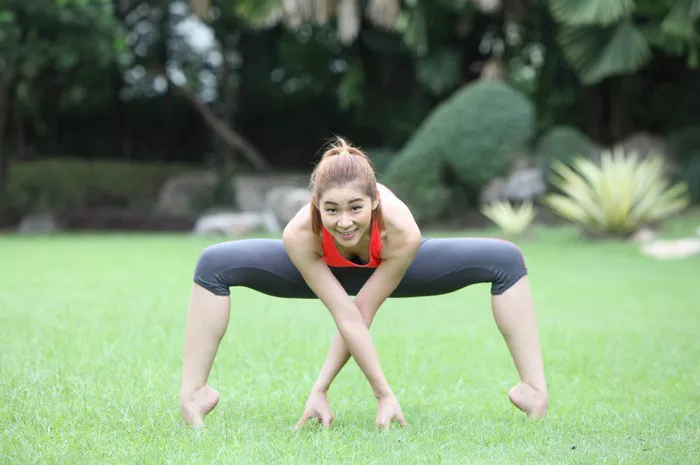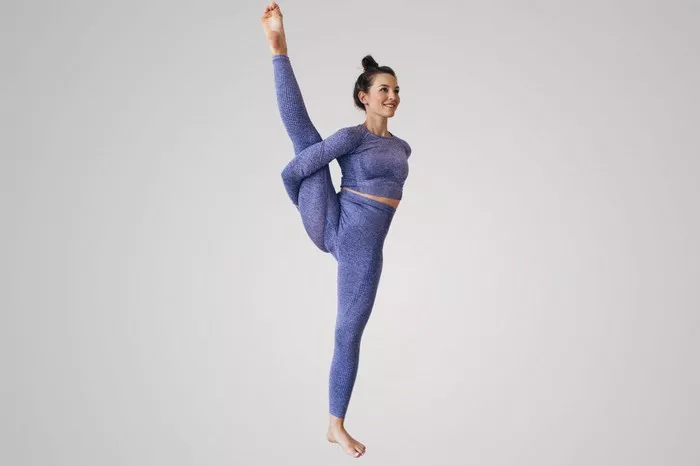Yoga offers a wide array of poses, each with its own benefits for physical and mental health. Among these poses, the Upward Facing Dog Pose (Urdhva Mukha Svanasana) stands out as an essential asana that combines strength, flexibility, and mindfulness. Whether you are a seasoned yogi or just starting your practice, mastering this pose can offer a range of physical benefits while helping to cultivate focus and energy.
In this comprehensive guide, we will explore the Upward Facing Dog Pose in great detail. You will learn everything from its basic alignment and step-by-step instructions to its numerous benefits, common mistakes to avoid, and modifications for different levels. By the end of this article, you will have all the tools you need to deepen your practice and embrace the power of this pose.
What Is Upward Facing Dog Pose?
The Upward Facing Dog Pose is a backbend that involves lifting your chest and torso off the ground while your arms are fully extended and your legs are engaged. It is typically practiced in a flow sequence and can be seen as a transition between poses like Chaturanga Dandasana (Four-Limbed Staff Pose) and Downward Facing Dog (Adho Mukha Svanasana).
This pose is often mistaken for Cobra Pose (Bhujangasana), but the key difference is that in Upward Facing Dog, the thighs are off the floor, and the arms are fully straightened. The name, “Upward Facing Dog,” comes from the way your body resembles a dog stretching upward. It is a wonderful pose for strengthening the spine, arms, and core, while also increasing the flexibility of the back and chest.
Importance of Mastering Upward Facing Dog
Mastering the Upward Facing Dog Pose can bring many benefits to your overall yoga practice. It is a dynamic backbend that helps to open the chest, strengthen the arms and legs, and create length through the spine. It is also a posture that can increase energy, boost focus, and provide relief from stress. Many yoga sequences incorporate this pose, so understanding how to practice it correctly is essential for advancing in your practice and building a strong foundation.
The Benefits of Upward Facing Dog Pose
1. Improves Posture
Upward Facing Dog is highly effective in improving posture. It strengthens the back muscles and opens up the chest, counteracting the effects of poor posture from sitting or slouching. By practicing this pose regularly, you can enhance your spine’s natural curvature and alignment, promoting a more upright and confident posture both on and off the mat.
2. Increases Flexibility in the Spine
One of the primary benefits of the Upward Facing Dog Pose is its ability to stretch and lengthen the spine. This backbend encourages flexibility in the spine, which can help alleviate tightness in the back and neck. Over time, practicing this pose regularly can improve the overall range of motion in the spine.
3. Strengthens the Core, Arms, and Legs
The Upward Facing Dog Pose requires strong engagement of the core, arms, and legs. The muscles of the core (including the abdominals and obliques) must be activated to support the backbend, while the arms must press into the floor to lift the chest. Additionally, the legs remain active, lifting the thighs off the ground, which strengthens the quadriceps and helps engage the lower body.
4. Opens the Chest and Shoulders
In Upward Facing Dog, your chest opens up towards the ceiling, which provides an excellent stretch for the chest, shoulders, and pectoral muscles. This action can help relieve tightness in the upper body and shoulders, a common issue for those who spend a lot of time at a desk or working on a computer.
5. Boosts Energy and Focus
Backbends are known to stimulate the nervous system and increase energy levels. As you open your chest and lengthen your spine, you stimulate circulation and oxygen flow throughout your body. This helps to lift your mood and can promote mental clarity and focus.
6. Stretches the Hip Flexors and Thighs
Although the primary focus of Upward Facing Dog is on the upper body, it also provides a stretch to the hip flexors and the fronts of the thighs. This is especially beneficial for individuals who have tight hip flexors from prolonged sitting or those who engage in activities that require a lot of hip flexion, such as running or cycling.
7. Reduces Stress and Anxiety
Like most yoga poses, Upward Facing Dog helps to activate the parasympathetic nervous system (the “rest and digest” system), which can reduce stress and anxiety. By promoting deep, mindful breathing and creating space in the body, the pose allows you to relax your mind and reduce mental tension.
How to Practice the Upward Facing Dog Pose: Step-by-Step Instructions
It is essential to practice Upward Facing Dog with proper alignment to fully experience its benefits and avoid injury. Here’s a detailed, step-by-step guide to help you practice the pose correctly:
Step 1: Start in Plank Pose (Phalakasana)
To begin, come into Plank Pose by aligning your body in a straight line from head to heels. Place your hands directly under your shoulders with your fingers spread wide. Engage your core and make sure your feet are hip-width apart. This position activates the muscles needed to transition into Upward Facing Dog.
Step 2: Lower Your Body into Chaturanga Dandasana
From Plank, lower your body towards the ground, keeping your elbows close to your ribs. Bend your elbows to a 90-degree angle and lower your body down. Your chest and thighs should hover just above the floor in Chaturanga Dandasana, a precursor to Upward Facing Dog.
Step 3: Transition Into Upward Facing Dog
Now, press your palms into the floor and begin to straighten your arms. As you press through the hands, lift your chest and upper back off the floor, reaching your heart forward. Your thighs should lift off the ground, and the tops of your feet should press firmly into the mat.
Keep your legs straight and engage your quadriceps, pulling the tops of your thighs upward. Ensure your core is active, helping to lift your chest and prevent the lower back from collapsing.
Step 4: Open the Chest and Lift Through the Spine
As you lift, allow your chest to open and your shoulder blades to draw down your back. Your arms should be straight, and the elbows should not lock. Keep your gaze forward or slightly upward without straining your neck. Feel the lengthening of the spine as your chest opens and your collarbones broaden.
Step 5: Hold the Pose and Breathe
Hold the pose for 3 to 5 breaths. Focus on deep, steady breathing, allowing your body to relax into the stretch. While holding, keep the legs engaged, and imagine your spine lengthening as you press your chest forward and upward.
Step 6: Release the Pose
To release, slowly lower your body back to the ground, keeping control. You can move into Child’s Pose (Balasana) for a rest or transition into Downward Facing Dog (Adho Mukha Svanasana) for a more active pose.
Common Mistakes in Upward Facing Dog and How to Correct Them
Even though Upward Facing Dog might seem straightforward, there are several common mistakes that practitioners often make. These errors can lead to strain or diminish the benefits of the pose. Here’s a list of common mistakes and how to avoid them:
1. Collapsing the Lower Back
When lifting into Upward Facing Dog, many practitioners allow their lower back to collapse, which can put unnecessary strain on the spine.
How to correct it: Engage your core muscles by pulling the belly button toward the spine, and actively lift through the front of the body. This will help you avoid collapsing in the lower back and maintain a safe, supportive curve in the spine.
2. Overextending the Neck
Some students extend their neck too far backward, which can lead to strain in the cervical spine.
How to correct it: Keep your neck in alignment with your spine. Avoid craning your head backward. Gaze slightly upward or forward without overextending the neck. Make sure your neck remains long and relaxed.
3. Not Engaging the Legs
The legs are often underutilized in Upward Facing Dog, which can make the pose feel unstable and less effective.
How to correct it: Engage the quadriceps and press the tops of the feet into the floor. This will activate the legs and help stabilize your body, allowing for a more powerful and balanced pose.
4. Letting the Shoulders Rise Toward the Ears
Raising the shoulders toward the ears can cause tension in the neck and shoulders.
How to correct it: Keep the shoulders away from the ears by drawing them down the back. Imagine trying to reach your shoulders toward your hips, which will help open the chest and relieve shoulder tension.
5. Not Pressing Through the Hands
Inadequate hand pressure can make it difficult to lift your chest off the floor.
How to correct it: Press your palms firmly into the floor, spreading your fingers wide. This will create a stable base and allow you to lift the chest and torso with greater ease.
Modifications and Variations of Upward Facing Dog
If you are a beginner or have any physical limitations, here are some modifications you can try:
1. Use Cobra Pose Instead
If lifting your thighs off the floor is difficult, you can practice Cobra Pose (Bhujangasana) as a gentler alternative. In Cobra Pose, the chest is lifted, but the legs remain on the ground, making it a less intense backbend.
2. Knee-Down Upward Dog
For a modification of Upward Facing Dog, you can keep your knees on the mat. This version provides less intensity and is gentler on the lower back and core while still offering a stretch for the chest and spine.
3. Use Props
You can place a block or bolster beneath your chest for added support. This can help you deepen the stretch without straining your back or shoulders.
4. Focus on the Core
If you’re struggling to lift your chest, try focusing more on engaging the core. This can help you develop the strength needed to maintain the posture while reducing strain in the lower back.
See Also: What Are Some Fun Two-Person Yoga Poses to Try Together?
Conclusion
The Upward Facing Dog Pose is a powerful asana that builds strength, improves posture, enhances flexibility, and offers a wide range of physical and mental benefits. By practicing proper alignment, engaging the correct muscles, and avoiding common mistakes, you can experience the full benefits of this backbend. Whether you are looking to improve your yoga practice or relieve stress, the Upward Facing Dog is a fantastic addition to any flow or asana sequence. With time, patience, and consistent practice, you will unlock the many rewards of this beautiful and dynamic pose.
You Might Be Interested In:






















